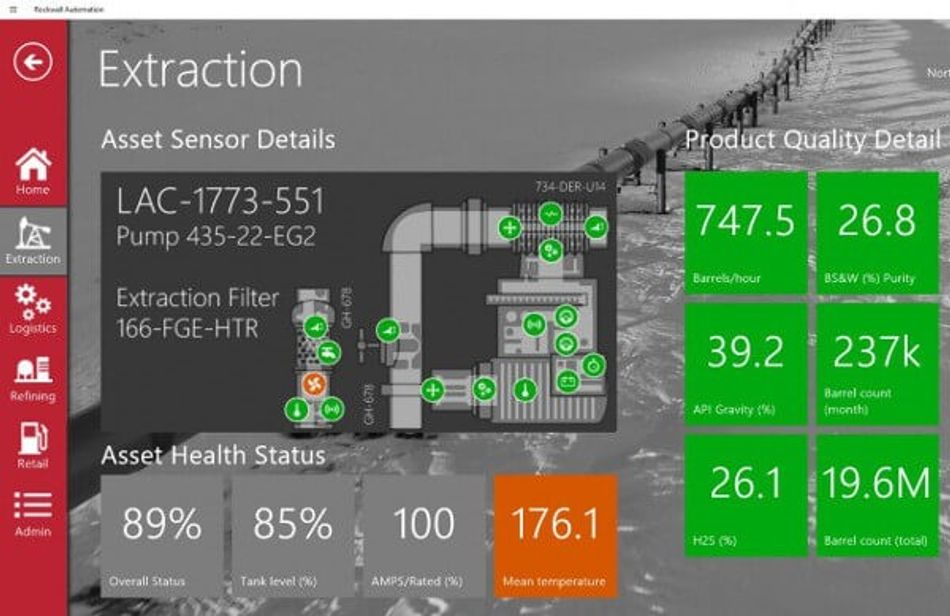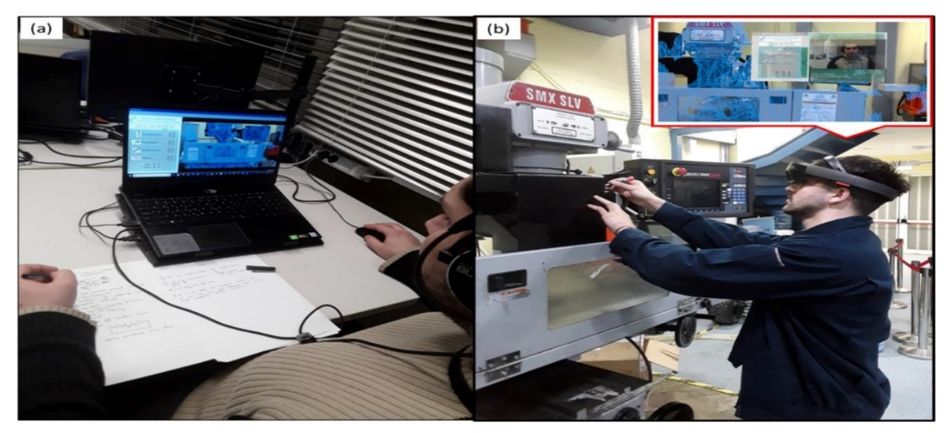Predictive Maintenance: Using Smart Sensors to get the most out of your assets
Article #4 of the Enabling IoT Series. Industrial enterprises are moving to a new approach to asset management, namely predictive maintenance by leveraging powerful new sensors and data.
This is the fourth article in a 6-part series exploring the technologies enabling the cutting-edge IoT.
Maintenance, Repair, and Operations (MRO) efficiency is one of the key contributors to profitability in industrial companies. This is why modern industrial enterprises are heavily investing in smart ways to manage their physical assets. Specifically, intelligent asset management helps enterprises to optimize maintenance schedules, maximize asset lifetime, and minimize physical wear.
These optimizations lead to improved productivity and positively impact their bottom lines. Nowadays, enterprises are offered various models for managing their assets. These models vary in complexity and deliver different levels of efficiency in the industrial automation domain.
Asset Management Models
Once upon a time, assets were maintained in a reactive fashion i.e., based on a reactive maintenance paradigm. A reactive maintenance approach maintains or repairs an asset when the latter stops functioning. This approach maximizes the utilization of the asset since the asset is used till its End-of-Life (EoL). However, this means that the operations that depend on the asset (e.g., production processes) must stop, and the company must deal with catastrophic unplanned downtimes. For example, production stoppage has adverse impacts on the continuity of industrial operations and the ability of the enterprise to meet productivity targets.
The downsides of reactive maintenance have led industrial enterprises to employ a preventive approach to asset management, namely preventive maintenance. This paradigm maintains assets before their EoL to avoid unplanned downtime. In this direction, the asset's nominal EoL as given by the OEM (Original Equipment Manufacturer) is considered.
Preventive maintenance enables industrial organizations to ensure the continuity of their processes as maintenance schedules can be properly planned at times that do not disrupt their operations. Nevertheless, preventive maintenance is far from being the best possible asset management model. This is because assets are underutilized and the Overall Equipment Efficiency (OEE) of the enterprise ends up being sub-optimal.
To alleviate the limitations of preventive maintenance, companies are implementing condition-monitoring and condition-based maintenance (CBM) of assets. Rather than relying on predetermined values of the asset's nominal EoL to schedule the maintenance, CBM leverages the actual condition of the asset to determine whether it should be maintained, replaced, or repaired.
To this end, CBM analyzes data that reflect the actual physical condition of the asset, such as information about the asset's operating vibration and temperature, as well as information from the asset's energy consumption or oil analysis. CBM facilitates maintenance engineers to identify issues with the assets (e.g., failures, wear) in an accurate and timely fashion. As such, it can also enable fast and effective maintenance processes.
Predictive maintenance (PdM) is one of the most prominent and advanced cases of CBM. It analyzes information about the condition of the asset in order to accurately predict its Remaining Useful Life (RUL). Specifically, RUL predictions are derived based on predictive analytics algorithms over sensor data, such as data from vibration, temperature, acoustic, and ultrasonic sensors, as well as thermal images. RUL estimation is a foundation for optimal scheduling of the assets' maintenance, which leads to the best possible OEE. In this way, PdM delivers tangible benefits to enterprises, including improved utilization of assets, as well as high-quality and cost-effective operations.
Predictive maintenance is currently considered one of the most prominent use cases of the fourth industrial revolution (Industry 4.0) since it is relevant to a wide array of industrial sectors and its critical infrastructure including manufacturing, energy, oil & gas, mining, smart cities, smart buildings, and facilities management. Specifically, PdM is extensively used in industrial automation applications in manufacturing shopfloor, oil refineries and energy plants. In recent years, PdM finds more and more applications outside of industrial automation, such as building automation for Smart Buildings".
Technology Building Blocks for Predictive Maintenance Systems and Services
The development and deployment of CBM and PdM systems hinge on the integration of high-fidelity sensing systems with state-of-the-art digital technologies. In particular, a PdM system comprises the following technological elements:
- Sensors and Internet-of-Things (IoT) Devices: Sensors and other internet-connected devices such as IoT-enabled embedded systems allow the acquisition of data about the condition of the physical asset. In most cases, IoT middleware is used to automate the data collection process. As already outlined, different types of sensors can be used to identify the condition and the status of the asset. Moreover, there are PdM applications that combine and fuse information from multiple sensing modalities to achieve greater accuracy.
- Big Data Management: In most cases, PdM applications leverage very large volumes of data about physical assets towards identifying and assessing their condition. In several cases, sensor data are analyzed in conjunction with data from enterprise systems such as ERP (Enterprise Resource Planning) and CMMS (Computerized Maintenance Management) systems. Moreover, sensor information features high ingestion rates and tends to comprise noisy and uncertain data. Therefore, most PdM applications must process Big Data that feature data of high volume, velocity, and veracity. In this direction, PdM deployments comprise Big Data management systems, including historian databases and data lakes.
- Cloud Computing and Edge Computing: Nowadays many PdM systems are deployed within cloud computing infrastructures. This enables predictive maintenance systems to benefit from the capacity, scalability and quality of service of the cloud. Specifically, cloud infrastructures enable PdM developers and deployers to flexibly access the storage and computing resources needed to manage and analyze maintenance-related Big Data. There are also cases where condition monitoring and predictive maintenance insights must be analyzed in real-time. In such cases, edge computing and edge devices are usually deployed in conjunction with the cloud infrastructure.
- Big Data Analytics & Machine Learning: Most PdM applications hinge on credible predictions about the RUL and other critical conditions (e.g., failure modes) of the asset. In this direction, they employ predictive analytics such as regression techniques. Moreover, machine learning techniques are commonly used to predict the asset's status and provide prescriptive recommendations about how and when to maintain it. In recent years, the availability of large amounts of data about the asset has also given rise to the use of deep learning techniques such as LSTM (Long Short Term Memory) and other types of Artificial Neural Networks (ANNs), which provide better predictive power than most classical machine learning techniques.
- Visualization: PdM insights must be visualized in ergonomic and user-friendly ways to enable technicians and maintenance engineers to effectively perform their tasks. In this direction information about failure modes and RUL estimations are visualized in dashboards and charts. There are also cases where maintenance instructions and recommendations are displayed as Augmented Reality (AR) cyber-representations over the asset to facilitate workers in maintenance and repair tasks.
These modules and technology building blocks are combined in the scope of end-to-end solutions. Integration can be challenging as the above-listed blocks are not always compatible with each other. For instance, there is usually a mismatch in the data models produced by the hardware and the models that are consumed by the machine learning algorithms. In this direction, companies are better off using PdM platforms that alleviate this heterogeneity and ensure the interoperability of the various modules.
At the hardware level, there are platforms and maintenance kits that integrate different sensors in a hardware box. In practice, the development of end-to-end solutions are also challenging from an economic perspective. This is because an integrated end-to-end solution involves the licensing and use of elements from different providers, including hardware providers, cloud infrastructure providers, and software/analytics vendors.
Practical Applications of Predictive Maintenance
Using the above-listed technologies it is nowadays possible to develop a wide range of PdM-based applications, which help industrial enterprises improve the quality, timeliness, and the cost-effectiveness of their operations. Here are some popular use cases:
- Condition based monitoring of HVAC units: The proper operation of HVAC units is very important for the comfort, health, and well-being of tenants in smart buildings. Hence, HVAC equipment must be properly and proactively maintained. IoT devices can be used to monitor the operating parameters of the smart building equipment, including vibrations, sound anomalies, airflow, and current. Leveraging and analyzing the collected data about these parameters, CBM and PdM solutions can predict machine failures before they happen in order to trigger maintenance tasks before they become urgent.
- Intelligent Asset Management based on Smart Failure Model Effects and Criticality Analysis (FMECA): FMECA is a popular approach for assessing the failure risks of physical assets towards preventing problems and malfunctions. It is based on a data-driven estimation of failure chains, including the failure mode, the effects of the failure, and its causes. Predictive maintenance systems can be used to predict and anticipate failure modes for specific assets while linking them with their potential causes. Hence, PdM deployments enable maintenance engineers to improve the accuracy and predictive power of their FMECA processes.
- Quality Management and Zero Defects Manufacturing: Malfunctioning assets are one of the most prominent causes of defects and production quality issues in manufacturing. For instance, an asset that does not function well is likely to cause wear that leads to defective products. PdM systems can therefore be used to proactively anticipate asset problems and to trigger actions that prevent them from happening. This is a foundation for improving production processes towards quality excellence. Also, PdM systems are among the main enablers of the vision of Zero Defect Manufacturing (ZDM), which employs a variety of preventive and predictive measures to ensure that no defective products are produced in an industrial site.
- Remote Maintenance using Augmented Reality: PdM can help reduce maintenance times when used in conjunction with AR-based remote maintenance. In this paradigm, a maintenance engineer of the OEM of the assets provides remote service or repair instructions to an on-site technician. The instructions are planned according to information about the asset's status that is provided by a condition monitoring and/or PdM system. This process obviates the need for traveling to the site and accelerates the maintenance and repair process.
Infineon Predictive Maintenance Solutions
As a leading semiconductor manufacturer, Infineon is offering several cutting-edge predictive maintenance solutions, including hardware, simulation, and analytics offerings.
XENSIV™ predictive maintenance evaluation kit
This predictive maintenance kit enables the development of end-to-end sensor-enabled condition monitoring and predictive maintenance solutions. The kit is the result of a unique partnership of Infineon along the IoT value chain. It enables the general development of popular use cases such as condition monitoring and predictive maintenance, e.g. for HVAC equipment in smart buildings or pumps in industrial automation. In this direction, the kit leverages Infineon's broad XENSIV™ sensor portfolio along with the FreeRTOS XMC4700 Arm® Cortex®-M4F XMC™ microcontroller qualified device. This sensor portfolio supports the collection of a very wide range of physical parameters from different assets, including:
- Airflow measurement at the compressor based on the XENSIV™ DPS368 barometric pressure sensor
- Current measurement at the fan and compressor based on the XENSIV™ TLI4971 current sensor
- Position sensing of the motor with XENSIV™ TLI493D-A2B6 3D magnetic sensor
- Sound anomaly detection in the unit with XENSIV™ MEMS microphones
- Linear vibration measurement with XENSIV™ TLE4997E Linear Hall sensor
- Opened and closed lid detection with XENSIV™ Hall sensors
- Speed and direction measurement with XENSIV™ TLI4966G Double Hall sensor
- Data processing with XMC™ 4700 or PSoC™ 6
- Secured connection and authentication with OPTIGA™ Trust M
Based on these sensors and the collected data, industrial organizations can implement various predictive maintenance scenarios. For example, in the case of HVAC maintenance, the XENSIV™ sensor portfolio enables the collection of condition data about various elements of HVAC units such as filters, compressors, motors, or fans. Furthermore, the XENSIV™ predictive maintenance evaluation kit facilitates the management of sensor data in the cloud, as well as their analysis by means of advanced predictive analytics and machine learning techniques.
The IPOSIM Lifetime Estimation Service
Infineon provides a novel Lifetime Estimation service for industrial assets. It is an enterprise-scale 24/7 service that leverages lifetime estimation algorithms and Infineon's expertise to facilitate the design process. Customers of this service can therefore benefit from Infineon's expertise in power electronics in order to simplify and accelerate their design processes.
The IPOSIM service offers access to three different simulation types including:
- Steady-state simulation for power and thermal calculation of a single cycle
- Load cycle simulation for power and thermal calculation of multiple operating points
- Lifetime estimation for expected lifetime calculation based on chosen parameters
The service is accessible through a user-friendly Graphical User Interface (GUI). The GUI guides designers in a step-by-step process through the simulation with power devices. Overall, the IPOSIM services facilitate selection of the most suitable high-power products for a given set of application requirements. Moreover, it helps reducing development costs, optimizing product sizing, reducing the bill of materials (BOM), and accelerating time-to-market.
Infineon and Industrial Analytics AI Services
Infineon-owned Industrial Analytics provides AI (Artificial Intelligence) based analytics services for intelligent asset management applications. Specifically, the company offers access to advanced analytics services for plant monitoring and timely detection of assets' degradation based on various sensing modalities such as vibration sensing. The analytics solutions include predictive maintenance based on predictive analytics functions, as well as the provision of prescriptive recommendations about how to best maintain, service, and repair industrial assets. The offered services take advantage of Industrial Analytics AI expertise and Infineon's deep knowledge of the semiconductors industry.
Overall, Infineon's solutions span all the different elements of predictive maintenance solutions: From reliable sensing to advanced AI-based analytics. The solutions are scalable, integrated, and easy to deploy. This helps industrial enterprises to accelerate the development and deployment of a wide range of condition monitoring and predictive maintenance in a variety of configurations.
Learn more about condition monitoring and predictive maintenance solutions here.
The first article explains why radar sensors are powerful enablers for intelligent IoT applications.
The second article provides a deep look at the role of Co2 sensors.
The third article looks at how Time of Flight (ToF) sensors are used for this purpose and are changing the way we can interact with VR, and other video technologies.
The fifth article explains how MEMS microphones can deliver high-quality sound in an ultra-small form-factor.
About the sponsor: Infineon Technologies
Infineon Technologies AG is a world leader in semiconductor solutions that make life easier, safer and greener. Microelectronics from Infineon are the key to a better future. With around 50,280 employees worldwide, Infineon generated revenue of about €11.1 billion in the 2021 fiscal year (ending 30 September) and is one of the ten largest semiconductor companies worldwide. To learn more click here.





